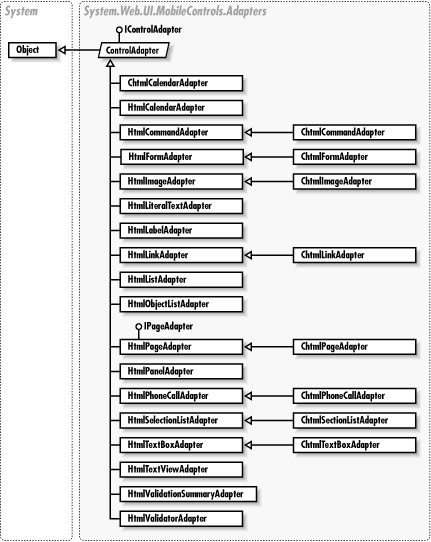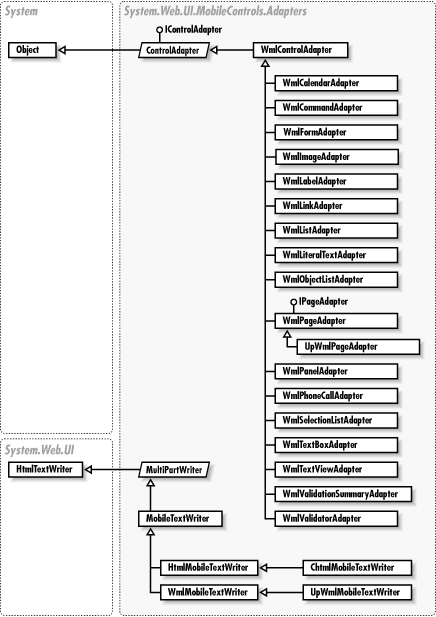Chapter 41. The System.Web.UI.MobileControls.Adapters Namespace
ASP.NET mobile pages are built on a device adapter model that allows
pages to support multiple different devices that have different
capabilities or expect different types of markup. This allows
developers to create device-independent mobile forms that will render
into WML, cHTML (compact HTML), or HTML. The mobile controls are
mapped to specific adapters that generate the appropriate output
using the <mobileControls> section of the
web.config and
machine.config files. Microsoft provides regular
updates to support additional devices (available for online
download), and you can even develop your own control adapter classes.
The
System.Web.UI.MobileControls.Adapters
namespace defines three adapter sets. These include
WML-specific classes (which render WML 1.1), cHTML-specific classes
(which render HTML 3.0 without any client-side scripting), and
HTML-specific classes (which render HTML 3.2 without client-side
scripting). You can extend these adapters and customize the output by
overriding the Render( ) method they provide, or
you can create your own by implementing the
System.Web.UI.MobileControls.IControlAdapter and
System.Web.UI.MobileControls.IPageAdapter
interfaces. Figure 41-1 and Figure 41-2 show the types from this namespace.


|

